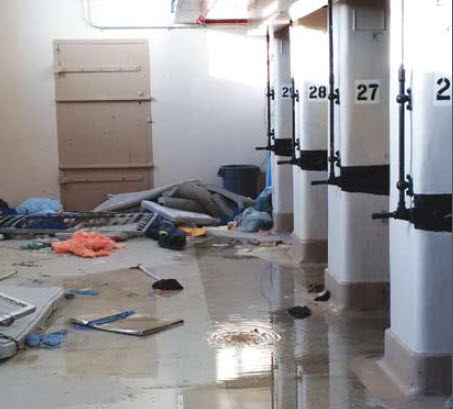
A variety of factors led to 2016’s deadly prison riot at Saskatchewan Penitentiary, but a refusal to work and refusal to lock up may have been the catalyst, an internal corrections report has found.
Last Wednesday, Correctional Service Canada published its investigation into the riot that left one inmate dead and several others injured. Jason Leonard Bird was identified as the inmate killed. Investigations indicate it was other inmates who caused Bird’s death.
According to the board of investigation, several factors contributed to the riot breaking out in the 475-prisoner, medium security unit. A total of 131 inmates on five ranges were involved, and damage was estimated to be $3.5 million. About 21 main inmates were involved. Of those, 16 were involuntarily transferred to a maximum-security institution. Institutional and criminal charges were laid against “many” of those principally involved, the report said.
According to the report, medium security inmates refused to work and refused to lockup. They destroyed property, barricaded range barriers, armed themselves with weapons and shields and covered their faces.
“Other inmates reported that once the riot had started, they were fearful of these inmates if they did not participate, thus amplifying the riot,” the report found.
Once the riot began, the riot proclamation was read throughout the facility. It had no effect on five of the ranges, but a sixth range did lock up at that point and did not participate, as one of its inmates was familiar with the proclamation and its Criminal Code consequences.
According to investigators, work and food issues; negotiations between inmate reps, kitchen staff and management; recent changes within the institution’s management team and the presence of “an influential inmate personality who had a history of inciting other inmates to act out” were all factors that led to the riot.
“The board of investigation found the riot was consistent with research suggesting that it emerged as a result of many intersecting factors. Although these preconditions did not cause the riot, the occurrence of a catalytic event may have sparked it,” the report said.
Despite action taken to resolve some of those issues, “the intersection of these multiple factors may have created the riot preconditions.”
Investigators wrote that the kitchen staff walkout may have been the catalytic event that sparked the riot.
After a series of walkouts, “inmates throughout the institution refused to go to work in what was reported to be a peaceful protest in support of the kitchen workers,” the report stated.
“However, during the work refusal, inmates on some ranges also refused to lock up. This behaviour escalated to the point where a riot started in those ranges and eventually spread to other ranges that were also refusing to lock up.”
The board of investigators recommended that inmates be fully informed and understand the meaning of the riot proclamation, and be aware of the consequences, including prison time, for not obeying the proclamation’s requests.

